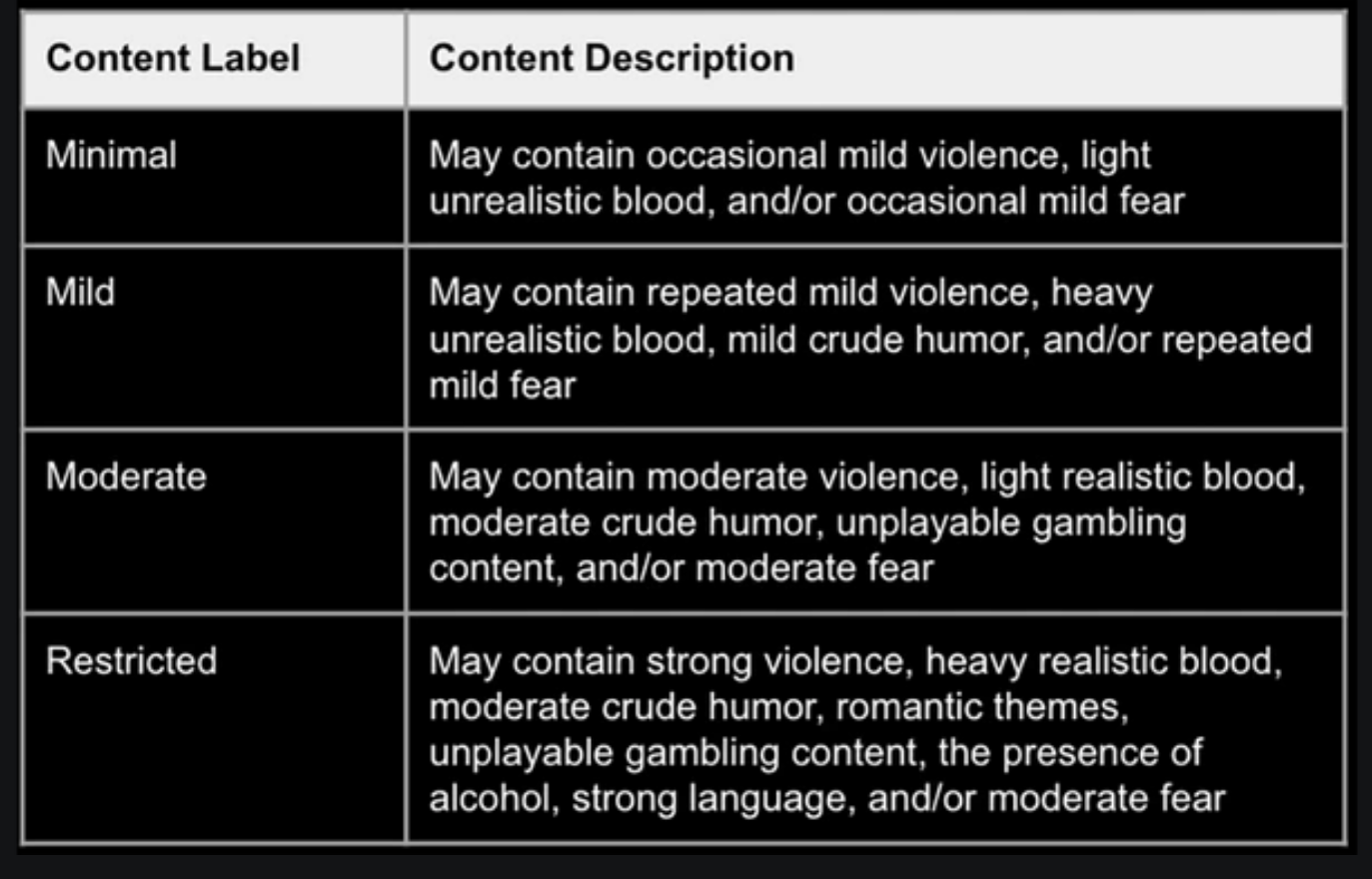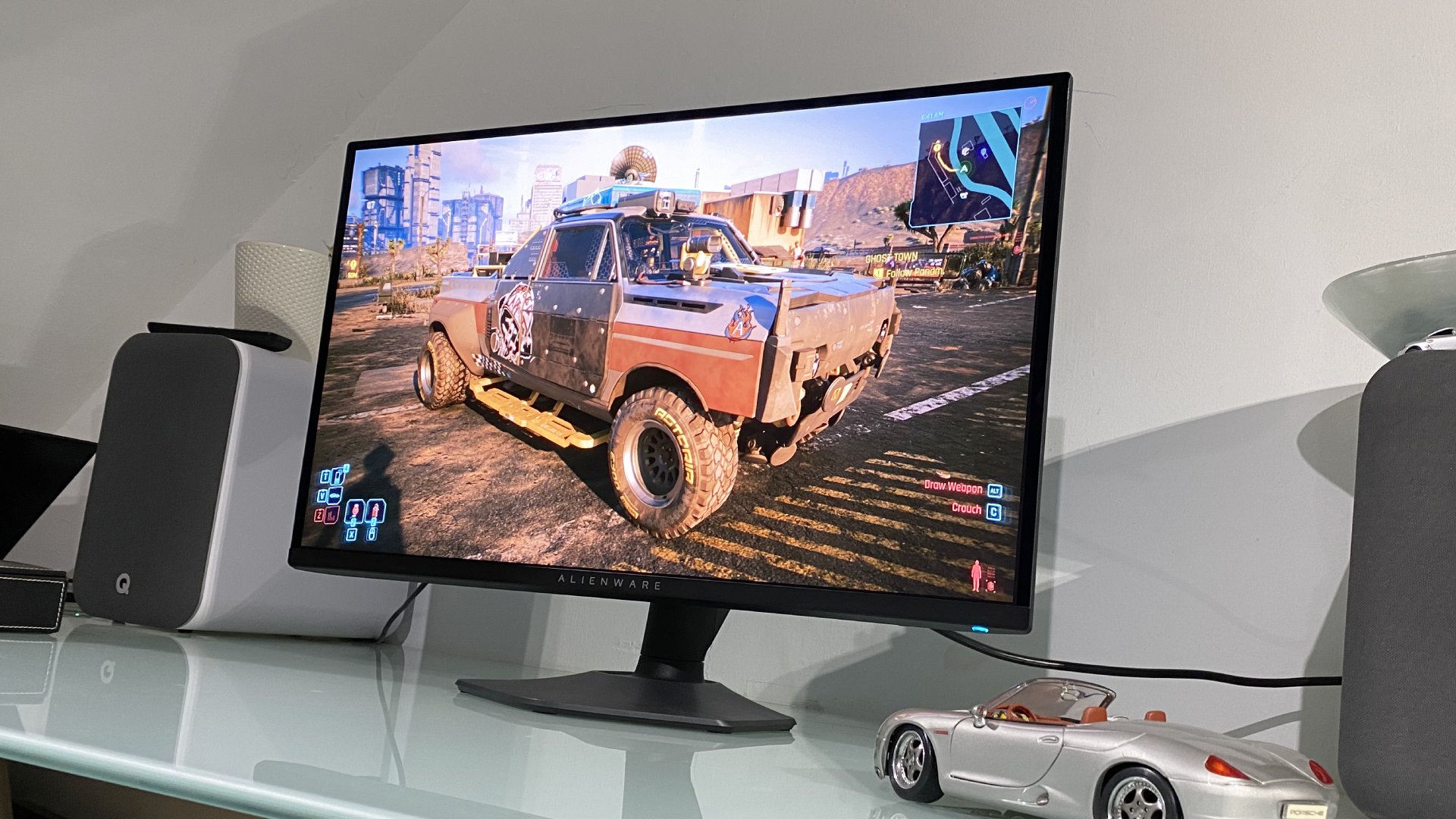
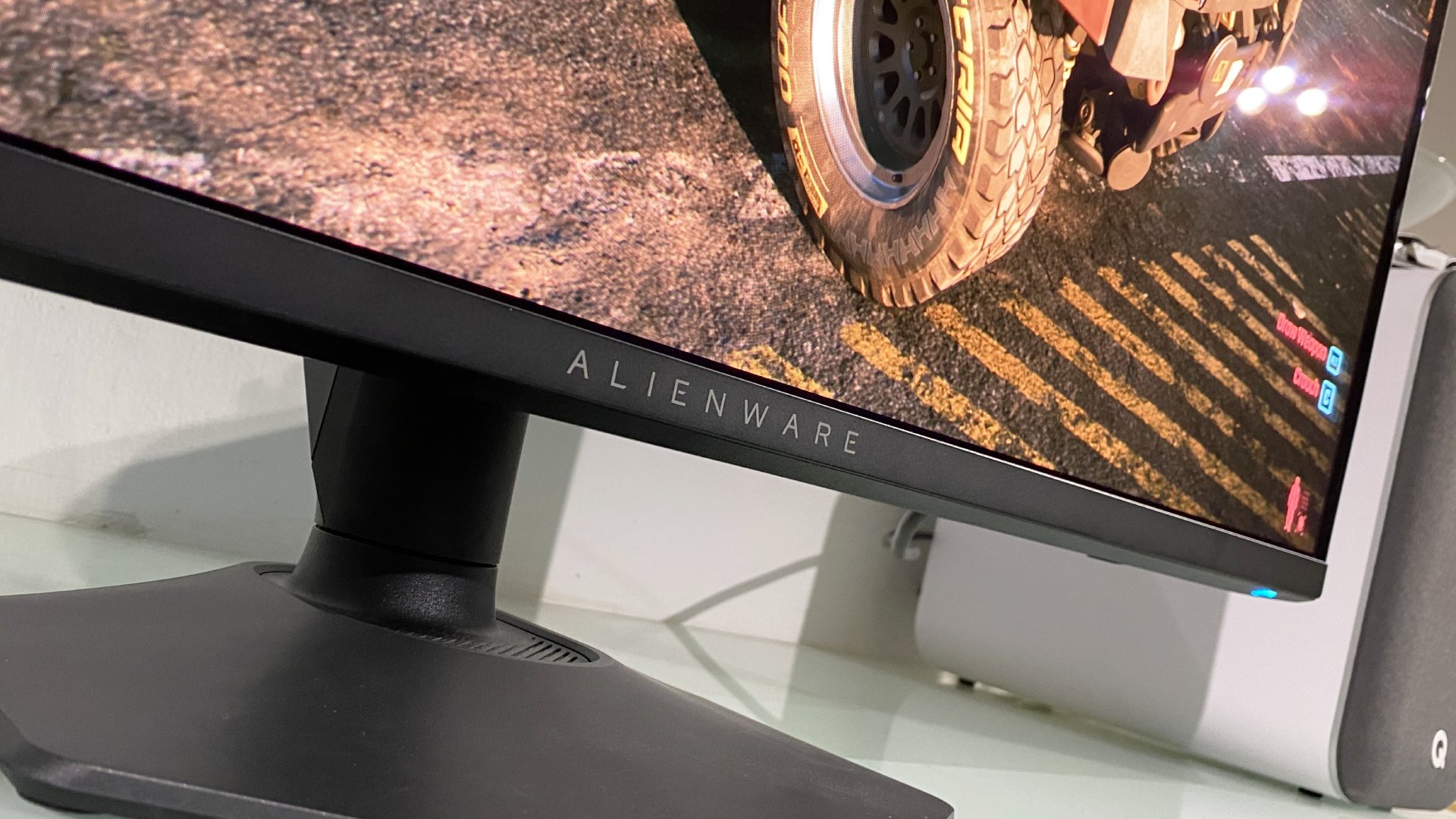
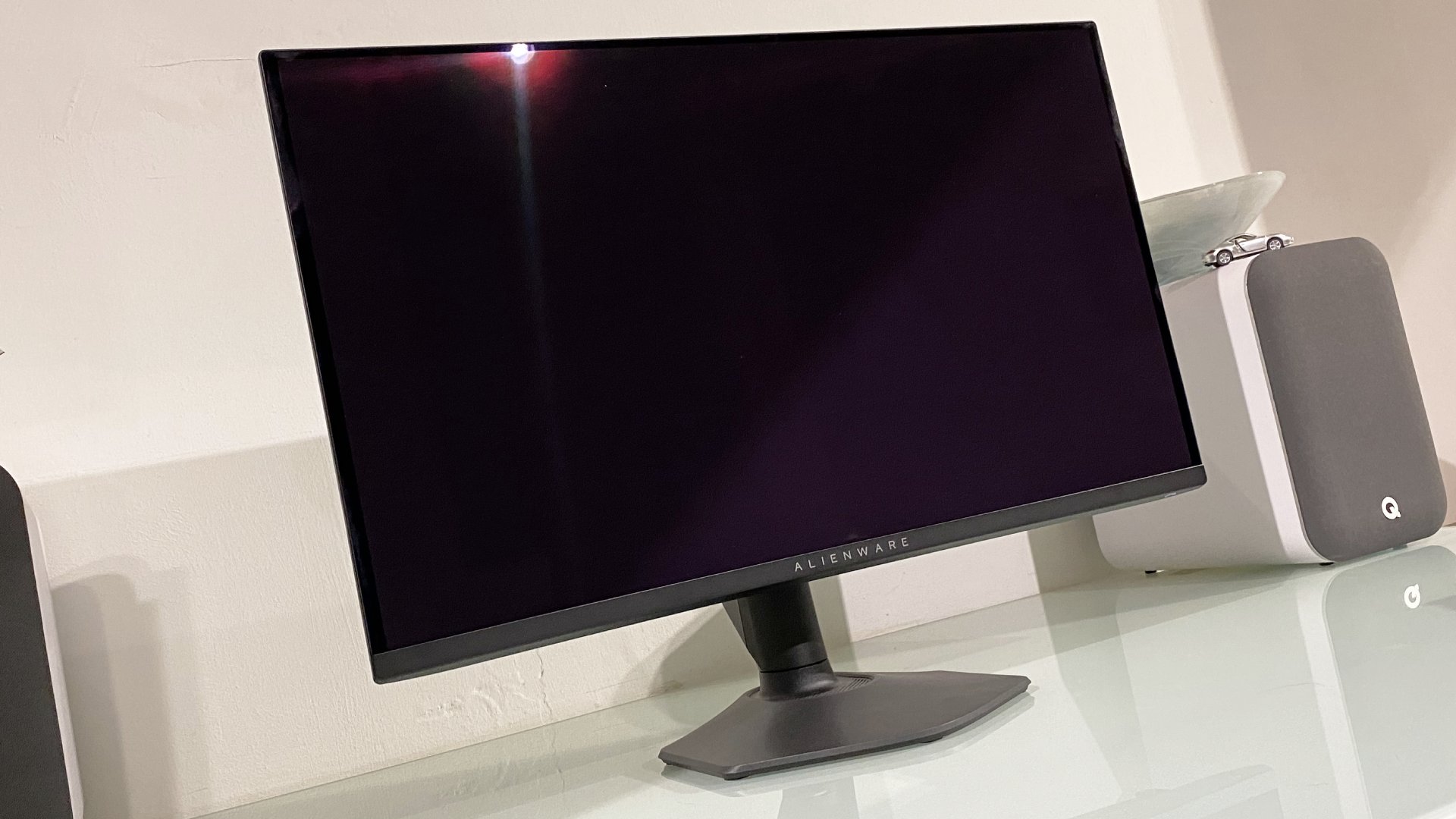

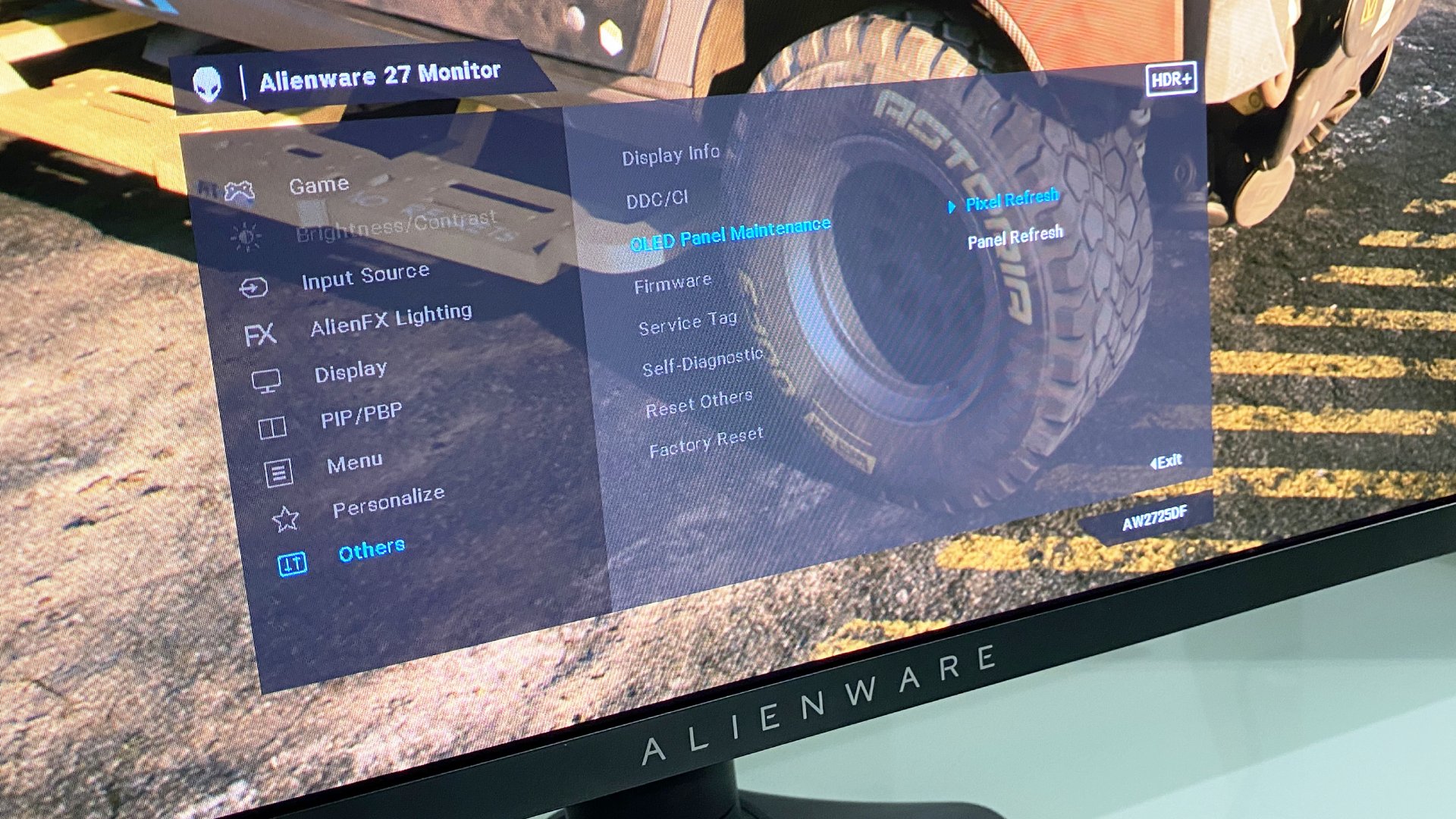
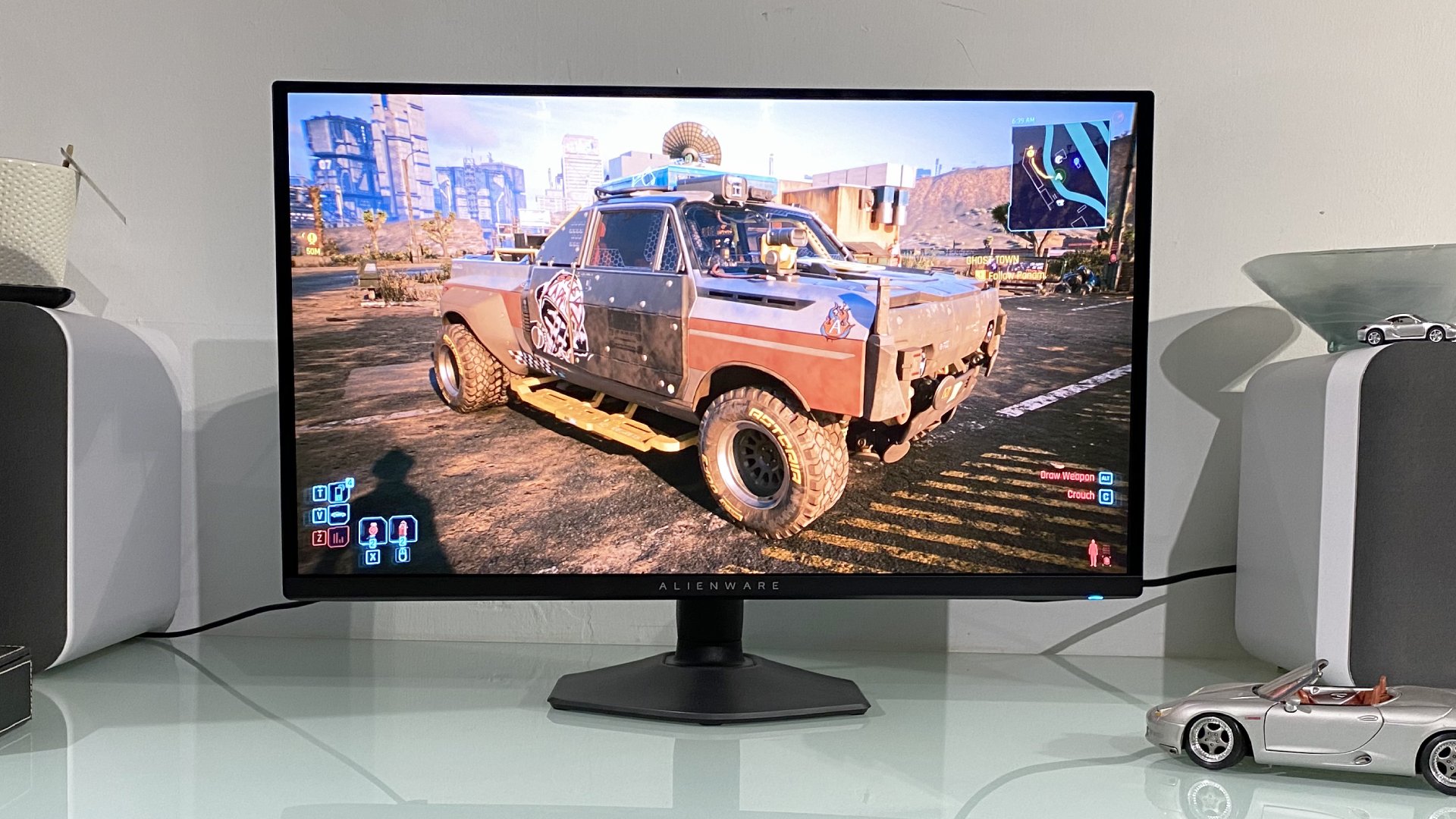
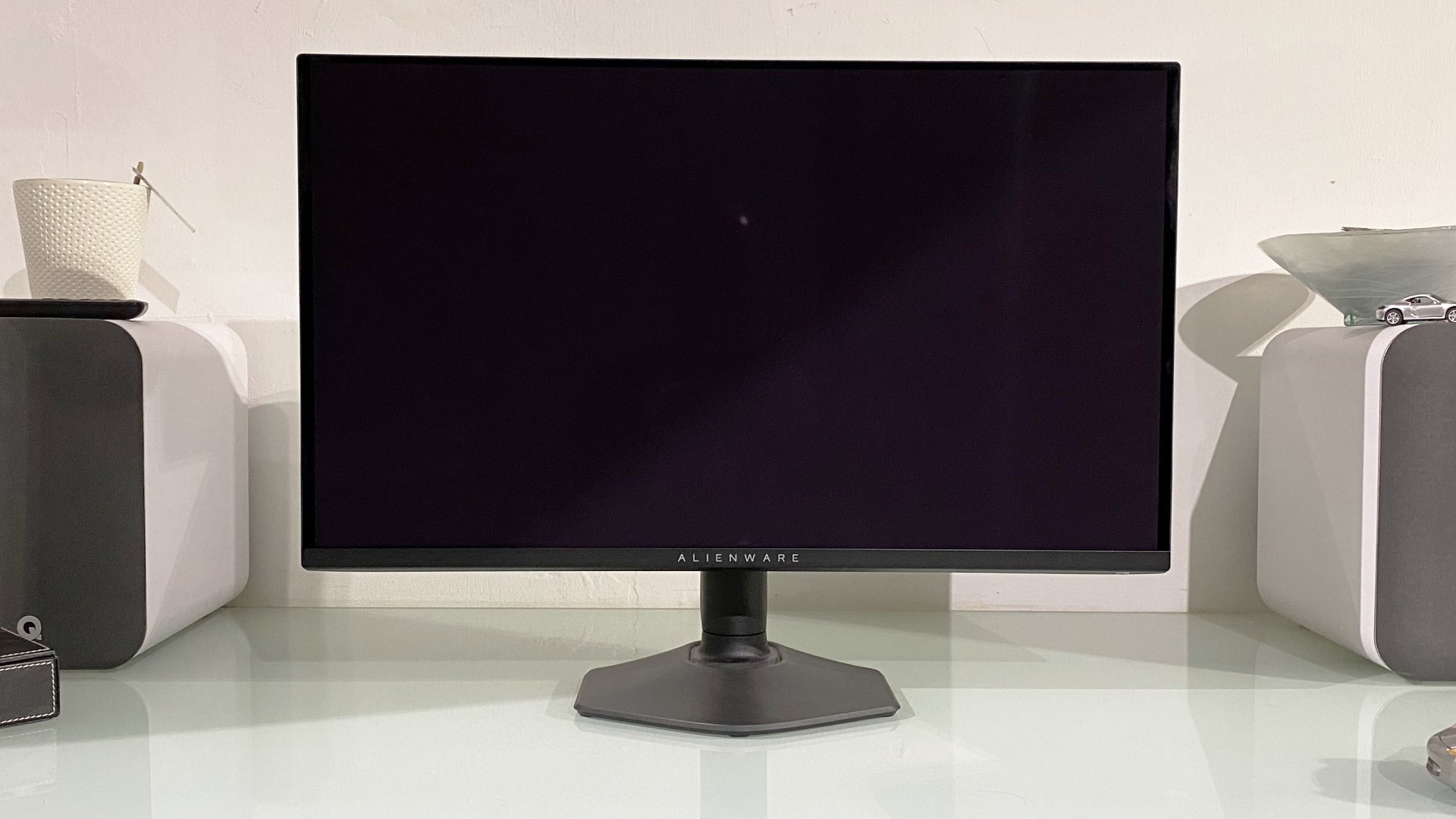
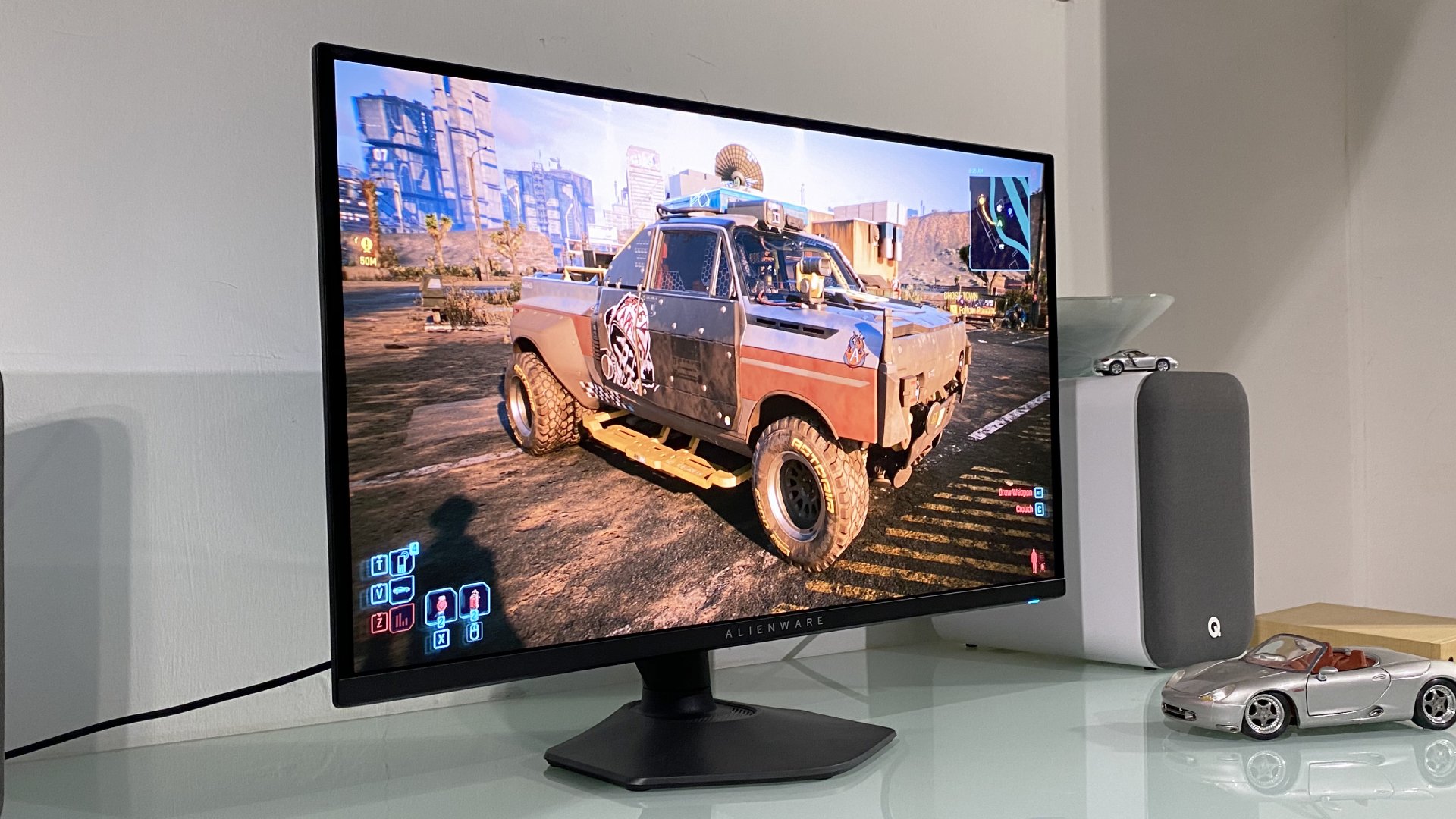
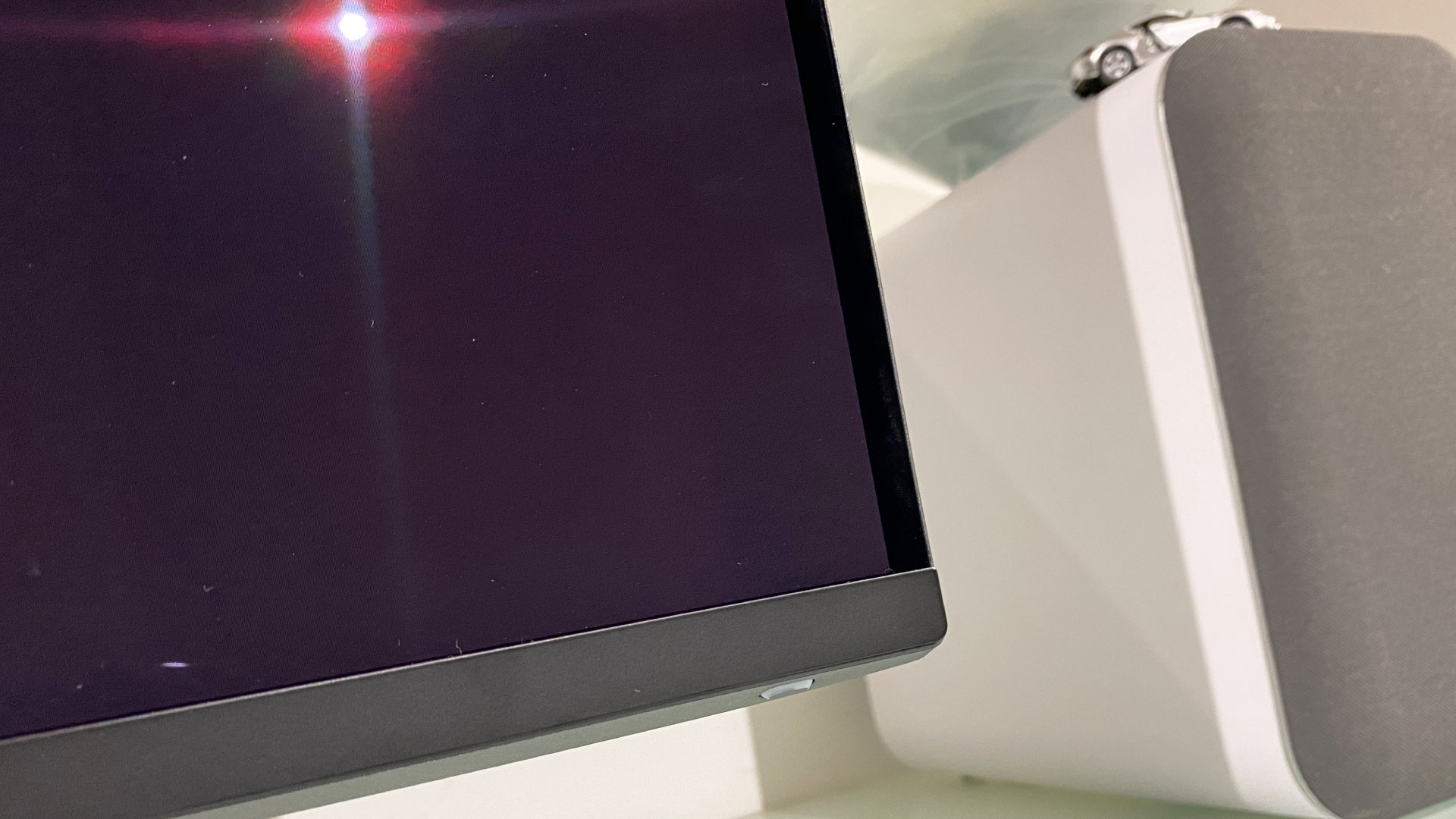
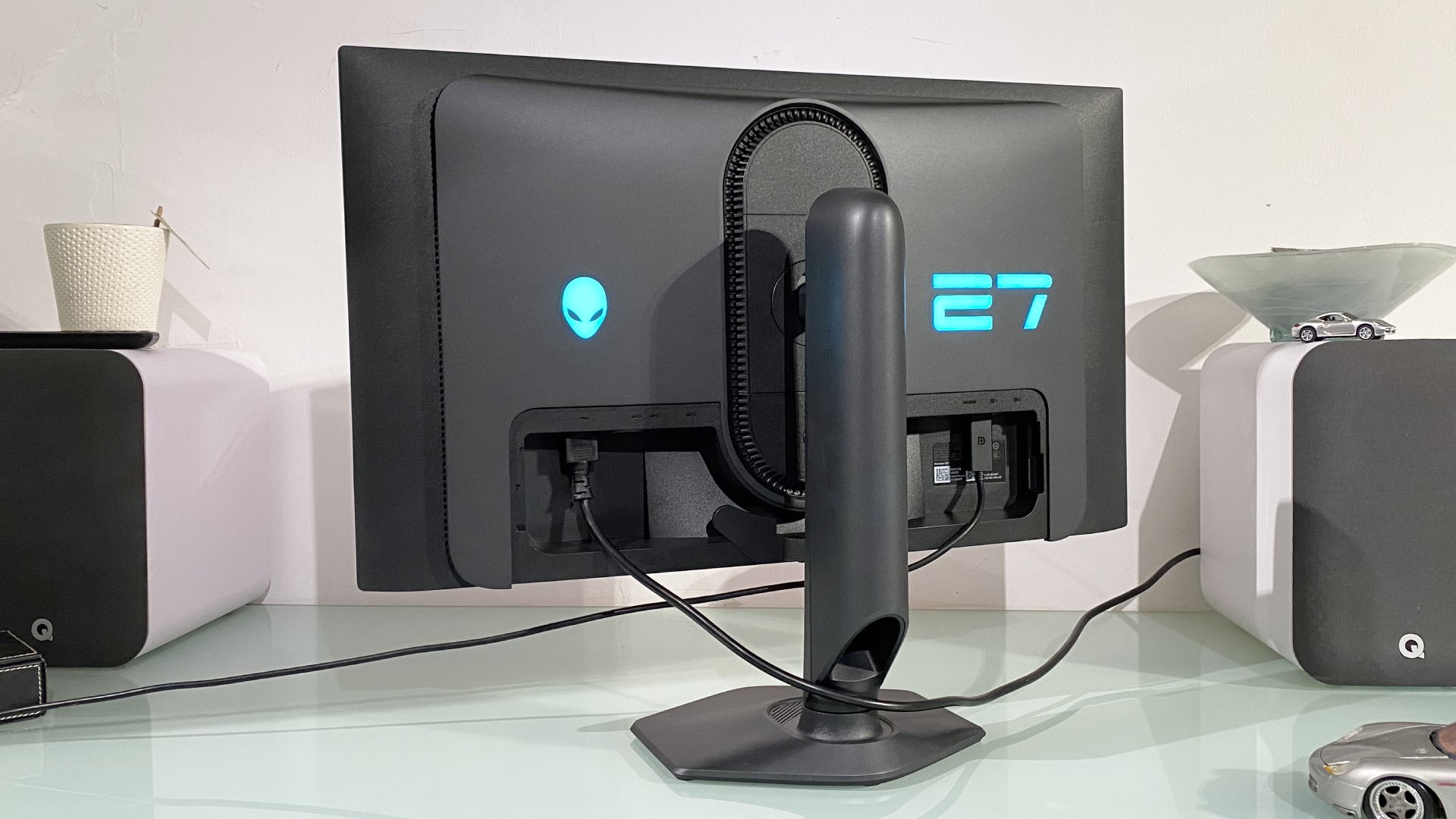
One small letter. But a whole lot of difference. Last week, we looked at the Alienware AW2725QF, the brand’s new dual-mode 4K/1080p panel. This week it’s the turn of the Alienware AW2725DF. But if you’re assuming that swapping out the “Q” for a “D” makes this a minor revision, well, think again. This is a totally different beast.
Out goes the 27-inch dual-mode IPS 4K panel. In comes a QD-OLED 1440p display from Samsung which shares the same 27-inch diagonal, but that’s literally it. Okay, the styling and look of the chassis is pretty much the same between these two 27 inchers. But the actual display technology couldn’t be more different.
Of course, one of the most immediately obvious differences is pixel density. 1440p on a panel this size works out to about 109 DPI, where 4K comes to 163 DPI. That’s a dramatic difference you can’t miss. On the Windows desktop, fonts are much less crisp and sharp, and there’s generally less detail. You have fewer options for scaling the desktop interface to make that trade off between legibility and usable space, too.
However, in-game you could argue the delta isn’t nearly as obvious or important. 1440p still makes for very detailed gaming graphics and arguably sidesteps the whole 4K versus 1080p thing for gaming pretty neatly.
Alienware AW2725DF specs
Screen size: 27-inch
Resolution: 2,560 x 1,440
Brightness: 250 nits SDR, 1,000 nits HDR
Color coverage: 99.3% DCI-P3
Response time: 0.03 ms
Refresh rate: 360 Hz
HDR: HDR TrueBlack 400
Features: QD-OLED panel, HDMI 2.1 x2, DisplayPort 1.4, USB hub with 3x USB-a and 1x USB-C
Price: $799 | £620
Indeed, this monitor can do the same refresh at 1440p, namely 360 Hz, as its dual-mode sibling achieves at 1080p. The catch is that 1440p is about 75% more pixels than 1080p, and so you’ll need very roughly 75% more GPU power to hit the same frame rates.
Anyway, if you’ve got the GPU hardware, this OLED isn’t just a match for that IPS panel when it comes to latency. It’s easily got the measure of it when it comes to outright speed thanks to superior pixel response.
The dual-mode IPS is rated at a zippy 0.5 ms. But that’s only zippy for IPS. This QD-OLED clocks in at 0.03 ms. On paper, it’s an order of magnitude—plus some—faster. In the real world, the gap isn’t quite so substantial, but where you can just see the limitations of that IPS monitor when it comes to response if you look really closely, it’s essentially a solved problem with these modern OLED monitors. They’re just so fast.
This QD-OLED panel absolutely destroys the dual-mode IPS alternative for HDR and contrast performance.
The other really obvious advantage is HDR and contrast performance. This QD-OLED panel absolutely destroys the dual-mode IPS alternative by those measures. This is Samsung’s latest OLED technology, and it really delivers with HDR content. The peaks really sizzle, while the black levels are basically perfect and controlled on a per-pixel level.
Frankly, even with full-array dimming, IPS monitors don’t come close, and the AW2725QF doesn’t even have that. Even better, Alienware has calibrated SDR content really pretty nicely in HDR mode. So, you can essentially toggle HDR mode and leave it like that. There’s no need to jump between HDR and SDR modes depending on content type.
Well, there is one exception to that. By default the SDR mode has a brightness limiter that’s designed to ensure the overall panel brightness doesn’t fluctuate depending on the specifics of what’s being displayed.
You do get a bit of that in HDR mode. But it’s pretty subtle and on balance, the panel generally looks that little bit punchier and zingier in HDR mode. Whatever, you have the choice. If you want absolute consistency for SDR content, and for the record the sRGB profile is pitch perfect, then you have that option available.
Anyway, for gaming it’s pretty hard to fault a modern QD-OLED panel like this. They’re just so fast, the lighting is so perfect, the viewing angles so faultless. Funnily enough, it can actually be when you glance at a panel like this by accident from across the room that it’s OLEDness, for want of a better word, really hits home.
Where an IPS panel looks a little translucent thanks to light bleed and imperfect viewing angles, these OLED panels are just so, well, solid. It’s very hard to go back to a wishy-washy IPS panel once you’re used to OLED, that’s for sure.
It’s very hard to go back to a wishy-washy IPS panel once you’re used to OLED.
The one caveat to that is the characteristic greyness of QD-OLED panels specifically in bright ambient light. You can see it here just as you can with all other QD-OLED monitors. We don’t think it’s a major issue, but it’s something to bear in mind if for whatever reason you game in a really bright environment.
Of course, the real catch here is price. Alienware wants an extra $200 for this OLED over the already expensive dual-mode IPS alternative. The consequent $800 is just so much for a mere 1440p 27-inch monitor, even one this good.
Oh, one other aspect this OLED panel shares with its dual-mode doppelganger is connectivity. And that’s not a particularly good thing. You get DisplayPort and HDMI, plus a USB hub that includes a USB-C port on the bottom bezel. But there’s no USB-C upstream for single-cable laptop connectivity.
Buy if…
✅ You want a seriously quick monitor with great HDR: The QD-OLED panel exceeds at speed and HDR performance.
Don’t buy if…
❌ You want lots of monitor for your money: $800 for a mere 27-inch 1440p does not feel like a great deal.
Again, that’s somewhat forgivable for a dedicated gaming display. But this is still a $800 monitor and who knows what you might want to do with it a few years down the line. Even right now you might want to share with across both a desktop gaming rig and a laptop. Surely for that kind of money it should have USB-C support for laptops and other devices?
Anyway, pricing remains the killer for monitors like this. It’s simply very hard to get your head around paying this much cash for a mere 27-inch 1440p panel, even one this good. That’s doubly true when you consider that you can have a 49-inch ultrawide QD-OLED like the Gigabyte Aorus CO49DQ for only a little more money. Okay, it won’t be fully 360 Hz. But in all other regards, it’ll be literally twice the screen for the same price. And that disparity in quality just doesn’t make sense for this display.

